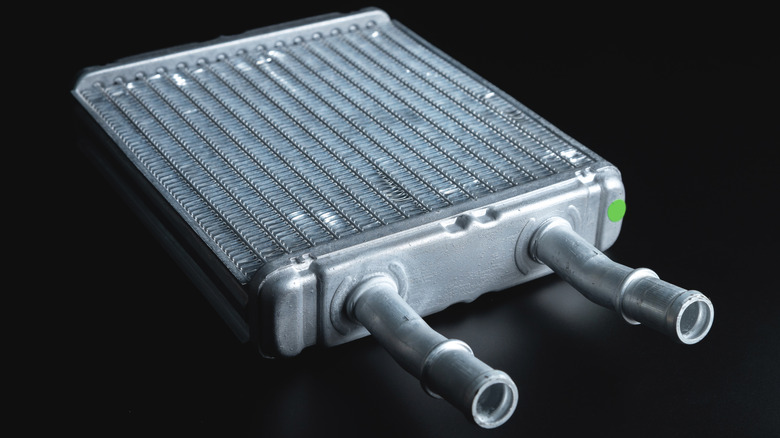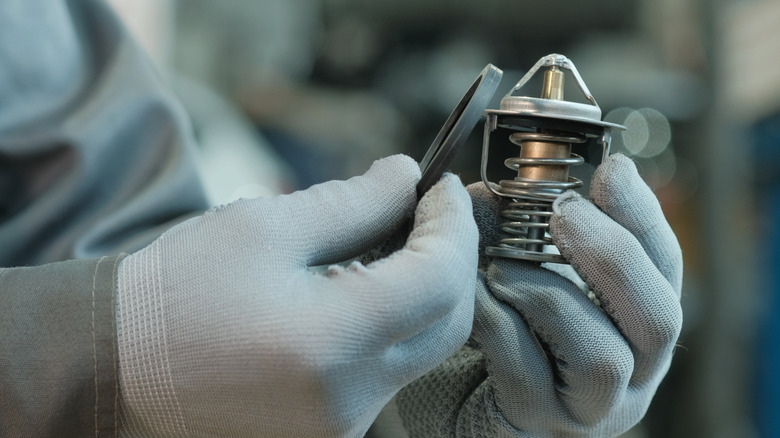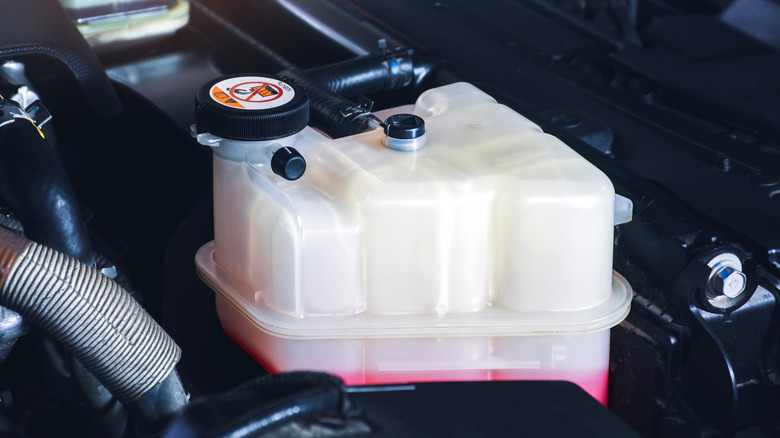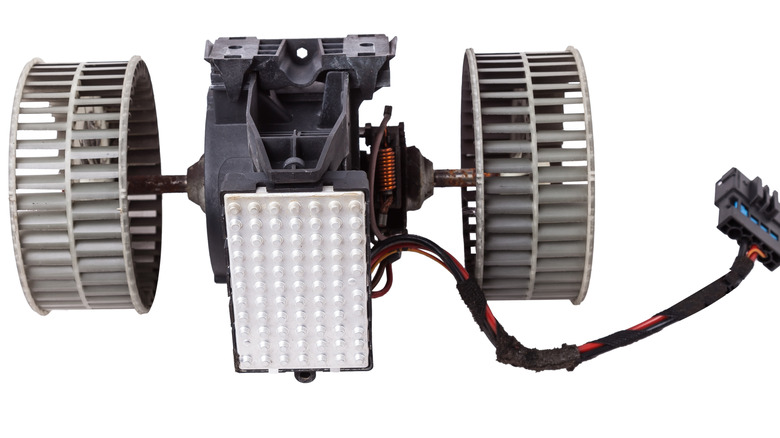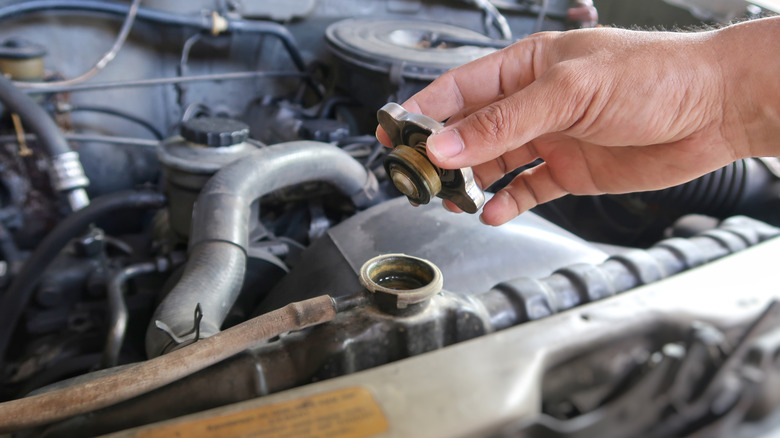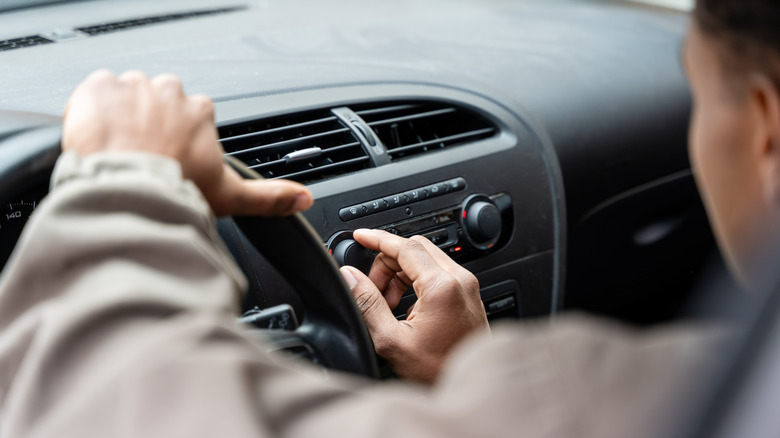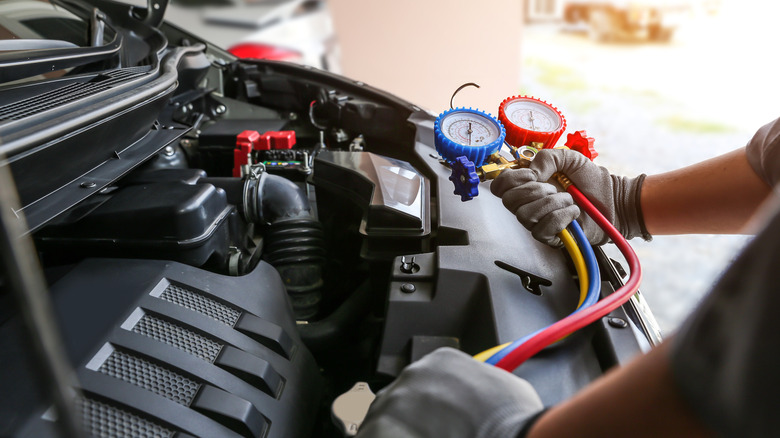5 Reasons Why Your Car's Heater Isn't Working
As winter sets in and temperatures drop, a functioning heater becomes a necessity. But what if, instead of warm comfort, your heater blows icy air through the vents, or fails to work altogether? It's a frustrating scenario that no driver wants to face. A malfunctioning or dead car heater can make commutes unbearably cold, especially during early mornings or late nights when temperatures are typically lower. While portable car heaters are an option, they require cumbersome connectors, 120V outlets, or extra effort to set up, and in the end, they still can't match the efficiency of your car's factory heating system.
Your car's heating system relies on a heater core, blower fan, coolant system, and HVAC controls. Coolant from the engine flows through the heater core — a radiator-like component — where the blower fan pushes warm air into your cabin through the vents. Without warm air, defrosting your windshield and clearing foggy windows can be challenging. Worse, a faulty heater might signal deeper issues like a faulty thermostat or low coolant levels, which can cause your engine to run too cold if ignored. So what are some of the reasons why your car's heater isn't working, and how can you fix these issues?
Clogged heater core
A clogged heater core is one of the most common reasons behind a malfunctioning car heater. Over time, debris and rust can accumulate in the coolant system, obstructing the heater core. This often results from radiator rust or particles bypassing the radiator and settling in the core. Once the core becomes blocked, warm air can no longer circulate effectively into the cabin, and the engine can overheat.
Diagnosing a clogged heater core is straightforward. Symptoms include weak airflow from the vents. You might also notice a sweet smell inside the cabin from the coolant leak. In some cases, you might find coolant puddles on the passenger-side floor — a telltale sign of a heater core issue. It is important to differentiate this from air conditioner condensation, which appears as clear water. Coolant leaks are usually red, green, blue, or purple, depending on the type.
Flushing the heater core can resolve minor clogs. However, if there are severe blockages or damage to the heater itself, you might need a full replacement. Adding to those repair costs, most heater cores are located beneath the dashboard, making the repair process time-consuming and labor-intensive.
Faulty thermostat
A faulty thermostat is a common reason a car heater fails to deliver warm air. Located between the engine and the radiator, this component regulates the coolant flow based on the engine's temperature. When functioning correctly, the thermostat stays closed during a cold start to help the engine warm up quickly. Once the engine warms up, it opens to allow coolant to circulate through the system. If the thermostat is stuck open, the engine fails to reach its optimal temperatures because of the continuously circulating coolant. This leads to insufficient heat for the cabin. Conversely, if the thermostat is stuck closed, the engine can overheat, still leaving the interior cold.
If persistent cold air is coming from the vents even after extended engine operation, then the thermostat may be faulty. Other symptoms of a bad thermostat include fluctuating temperature readings on the temperature gauge, coolant leaks, and poor fuel efficiency. A broken thermostat can disrupt the engine's cooling system, leading to issues like engine overheating. Fortunately, replacing a thermostat is a relatively simple task for a mechanic and can restore your car's heating functionality.
Low coolant
Coolant, also known as antifreeze, regulates engine temperature and heats your car's interior. Besides that, coolant prevents engine corrosion while keeping the radiator clean. It circulates through the heater core and transfers heat to warm the air that flows into the cabin. However, when coolant levels drop, either due to a cracked hose, a hole in the radiator, or inadequate maintenance, there isn't enough hot liquid to heat the air. The heater core cannot receive enough hot fluid if your coolant is too low. This is often accompanied by engine overheating, and you may feel cold air coming through the vents when turn on the heater.
Consider checking the coolant level in the overflow tank. It will be the translucent container near the radiator. You want to make sure it's between the minimum and maximum marks. If needed, top it up with the recommended type of coolant for your vehicle. However, you should only pour in more coolant when the engine is cool. Regular maintenance keeps your engine running smoothly and helps prevent more serious coolant issues. It's generally advised that you flush and change your coolant every two years or 30,000 miles.
Heater fan/blower motor issues
Even if hot coolant is reaching the heater core, the heater fan —or blower motor— is responsible for distributing warm air into your car's cabin. Sometimes, this component can fail due to mechanical failure or electrical problems. If the blower motor fails, your heater may appear to be non-functional, even though the system is generating heat. In this case, the heat remains trapped within the heater core and can't reach the cabin.
Issues with the blower motor lead to a weak airflow or, in worse cases, a complete absence of air from the vents. You may also hear unusual squealing and rattling noises when the heating system is activated. These issues may come from a faulty dashboard switch, a defective resistor controlling the fan speed, or problems with the motor itself. Replacing the motor can be labor-intensive due to its concealed location. However, it quickly resolves the heating issue.
Malfunctioning heater control valve and leaky radiator
A heater control valve regulates the flow of coolant through the heater core and gets the warm air to your cabin when desired. If this valve malfunctions, it can either restrict or entirely block the hot coolant flow, leaving the cabin without heat. On the other hand, a leaky radiator can prevent sufficient coolant from reaching the heater core and may lead to severe engine damage if left unresolved.
Common signs of a faulty control valve include no temperature changes when you adjust the heat settings. Sometimes, a stuck valve can also cause the engine to operate at cooler-than-normal temperatures. If your radiator is leaking, you may notice visible coolant puddles under the car or low coolant levels.
To diagnose the control valve issue, test the valve's operation and verify that it receives the correct signals from the car's climate control system. Similarly, assess the radiator and identify the source of the leak. For smaller leaks, you can apply pipe sealant or epoxy putty. Bigger issues can involve replacing the valve, hose, or entire radiator unit.
Faulty HVAC controls and electrical issues
Your car's HVAC controls —whether your car uses buttons, knobs, or touchscreens— manage the heating system. If these controls fail, the heater may not be functional at all. Broken dials or unresponsive touchscreens often cause this issue and can be fixed by replacing the malfunctioning controls or repairing their connections.
Electrical issues are frequent causes of heater problems in modern vehicles. These systems rely on wiring, fuses, relays, and control modules. A blown fuse or faulty wiring can stop the system entirely, leading to a lack of heat. If the heating system has an electrical malfunction, you might experience inconsistent airflow, incorrect temperature regulation, or a complete heater failure.
Check all the heating-related fuses and all connected components to ensure there isn't an electrical or wiring issue. Diagnosing more complex electrical problems usually requires specialized testing equipment, such as an OBD-II scanner or a 12-volt test light. Also, labor-intensive tasks like replacing the blower motor or the heater core require expertise since they involve going behind the dashboard.
What to do if your car heater isn't working
If your car's heater isn't working, the first step to fixing it is identifying the cause of the issue. Fortunately, some of these issues can be resolved on your own. Start by checking the blower settings on the HVAC — turn it up to the highest setting to see if air flows. Then, adjust the temperature controls to different settings and observe any leaks. Inspect your car's heating system under the hood if you don't notice any changes. Look for fluid leaks or any loose connections. Check to see if the thermostat is working properly. In some cases, the thermostat may not work correctly due to dead batteries or a lack of power supply caused by a tripped circuit breaker.
Another easy fix to consider is replacing the cabin air filter, as a clogged filter can restrict airflow and compromise the heating system. If the heater blows warm air inconsistently, there might be an issue with the heater core. To clear minor clogs or blockages in the heater core, try gently rinsing the exhaust manifold with a garden hose to remove debris. If the heating issues persist, then consulting a professional mechanic will be the best course of action.

